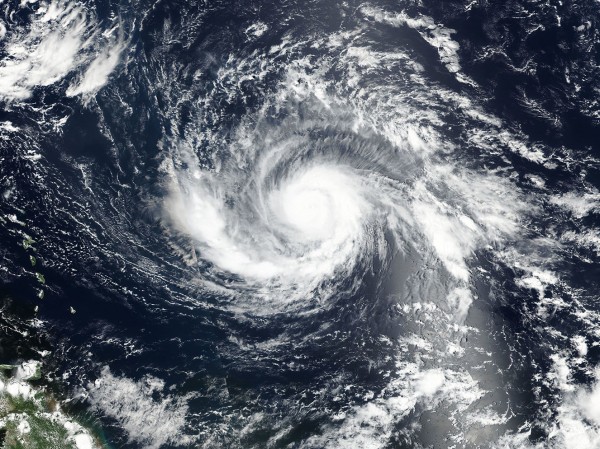 With first Houston, then several Caribbean islands and Florida suffering dreadful flooding and destruction from Hurricanes Harvey and Irma, many are questioning whether more should be spent on flood prevention and reducing greenhouse gas emissions. Economists would normally argue that such questions are answered by conducting a cost–benefit analysis.
With first Houston, then several Caribbean islands and Florida suffering dreadful flooding and destruction from Hurricanes Harvey and Irma, many are questioning whether more should be spent on flood prevention and reducing greenhouse gas emissions. Economists would normally argue that such questions are answered by conducting a cost–benefit analysis.
However, even if the size of the costs and benefits of such policies could be measured, this would not be enough to give the answer. Whether such spending is justified would depend on the social rate of discount. But what the rate should be in cost-benefit analyses is a highly contested issue, especially when the benefits occur a long time in the future.
I you ask the question today, ‘should more have been spent on flood prevention in Houston and Miami?’, the answer would almost certainly be yes, even if the decision had to have been taken many years ago, given the time it takes to plan and construct such defences. 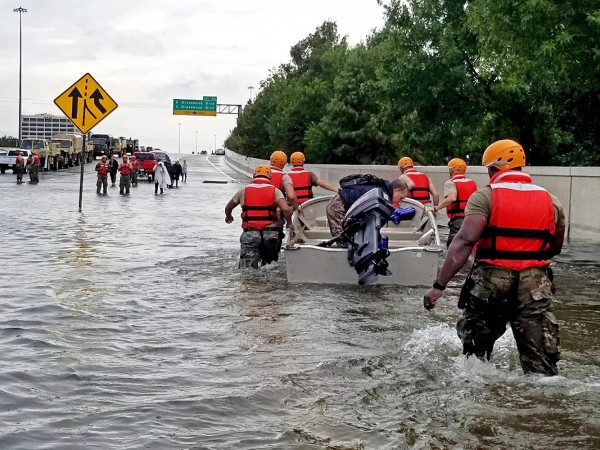 But if you asked people, say, 15 years ago whether such expenditure should be undertaken, many would have said no, given that the protection would be provided quite a long time in the future. Also many people back then would doubt that the defences would be necessary and many would not be planning to live there indefinitely.
But if you asked people, say, 15 years ago whether such expenditure should be undertaken, many would have said no, given that the protection would be provided quite a long time in the future. Also many people back then would doubt that the defences would be necessary and many would not be planning to live there indefinitely.
This is the familiar problem of people valuing costs and benefits in the future less than costs and benefits occurring today. To account for this, costs and benefits in the future are discounted by an annual rate to reduce them to a present value.
But with costs and benefits occurring a long time in the future, especially from measures to reduce carbon emissions, the present value is very sensitive to the rate of discount chosen. But choosing the rate of discount is fraught with difficulties.
Some argue that a social rate of discount should be similar to long-term market rates. But market rates reflect only the current generation’s private preferences. They do not reflect the costs and benefits to future generations. A social rate of discount that did take their interests into account would be much lower and could even be argued to be zero – or negative with a growing population.
Against this, however, has to be set the possibility that future generations will be richer than the current one and will therefore value a dollar (or any other currency) less than today’s generation.
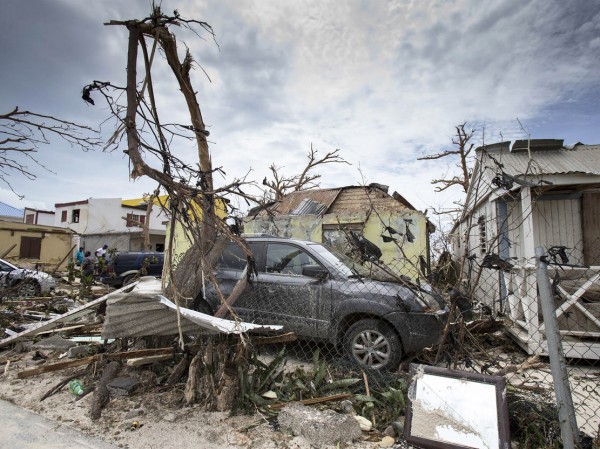 However, it is also likely, if the trend of recent decades is to continue, that economic growth will be largely confined to the rich and that the poor will be little better off, if at all. And it is the poor who often suffer the most from natural disasters. Just look, for example, at the much higher personal devastation suffered from hurricane Irma by the poor on many Caribbean islands compared with those in comparatively wealthy Florida.
However, it is also likely, if the trend of recent decades is to continue, that economic growth will be largely confined to the rich and that the poor will be little better off, if at all. And it is the poor who often suffer the most from natural disasters. Just look, for example, at the much higher personal devastation suffered from hurricane Irma by the poor on many Caribbean islands compared with those in comparatively wealthy Florida.
A low or zero discount rate would make many environmental projects socially profitable, even though they would not be with a higher rate. The choice of rate is thus crucial to the welfare of future generations who are likely to bear the brunt of climate change.
But just how should the social rate of discount be chosen? The following two articles explore the issue.
Articles
How Much Is the Future Worth? Slate, Will Oremus (1/9/17)
Climate changes the debate: The impact of demographics on long-term discount rates Vox, Eli P Fenichel, Matthew Kotchen and Ethan T Addicott (20/8/17)
Questions
- What is meant by the social rate of discount?
- Why does the choice of a lower rate of social discount imply a more aggressive climate policy?
- How is the distribution of the benefits and costs of measures to reduce carbon emissions between rich and poor relevant in choosing the social rate of discount of such measures?
- How is the distribution of the benefits of such measures between current and future generations relevant in choosing the rate?
- How is uncertainty about the magnitude of the costs and benefits relevant in choosing the rate?
- What is the difference between Stern’s and Nordhaus’ analyses of the choice of social discount rate?
- Explain and discuss the ‘mortality-based approach’ to estimating social discount rates.
- What are the arguments ‘for economists analysing climate change through the lens of minimising risk, rather than maximizing utility’?
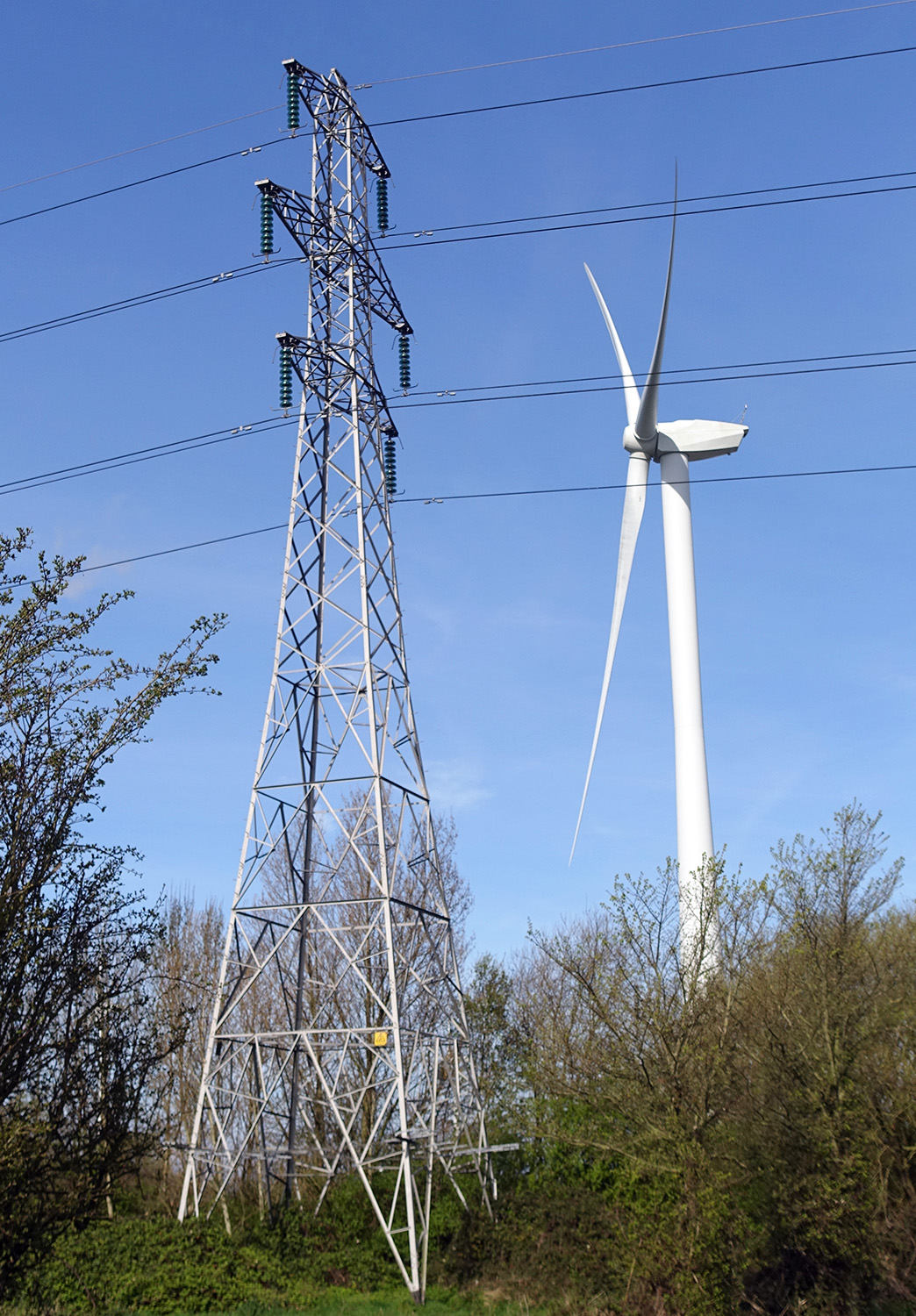 Following concerns about the market power of the Big Six energy suppliers in the UK and high prices for gas and electricity, the industry regulator, Ofgem, referred the industry to the Competition and Markets Authority (CMA) in June 2014. The CMA published its final report in June 2016. This argued that while there was sufficient potential for competition, consumers nevertheless needed further encouragement to switch suppliers. This would strengthen competition in the market.
Following concerns about the market power of the Big Six energy suppliers in the UK and high prices for gas and electricity, the industry regulator, Ofgem, referred the industry to the Competition and Markets Authority (CMA) in June 2014. The CMA published its final report in June 2016. This argued that while there was sufficient potential for competition, consumers nevertheless needed further encouragement to switch suppliers. This would strengthen competition in the market.
To encourage switching, the CMA proposed the creation of a database that would include the details of customers who have been on a supplier’s standard variable tariff (SVT) for three or more years. Competitor energy suppliers would have access to this database to offer better deals for these customers.
There had already been calls for price caps to be imposed on suppliers. For example, in the run-up to the 2015 general election, the then Labour leader, Ed Miliband, proposed imposing a price freeze. This was criticised by the Conservatives for being too anti-market, that it would encourage energy companies to raise prices prior to the freeze and that it would be of no benefit in times of falling wholesale energy prices (which was the position in 2015).
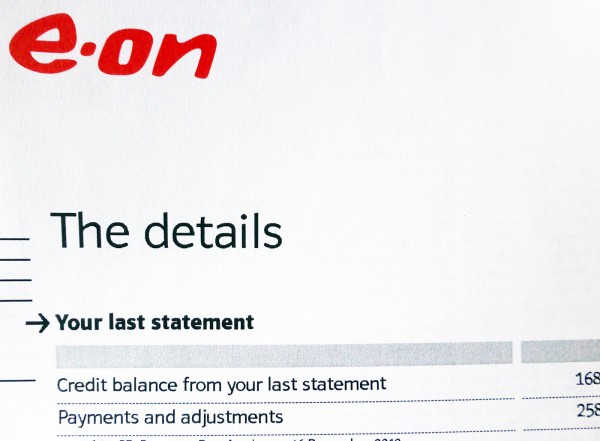 Indeed, in its 2016 report, the CMA recommended price caps only for the 16% of people on prepayment meters and these would be variable caps not freezes. This was followed in February 2017, by Ofgem’s announcement that a temporary price cap for such customers would come into effect in April 2017. The level of the cap would vary by meter type and region. It would also be reviewed every six months to reflect changes in costs and remain in place until 2020. There would be no cap on other customers.
Indeed, in its 2016 report, the CMA recommended price caps only for the 16% of people on prepayment meters and these would be variable caps not freezes. This was followed in February 2017, by Ofgem’s announcement that a temporary price cap for such customers would come into effect in April 2017. The level of the cap would vary by meter type and region. It would also be reviewed every six months to reflect changes in costs and remain in place until 2020. There would be no cap on other customers.
But in the run-up to the 2017 election, the Conservatives announced that they would, after all, introduce a price cap on SVTs – 66% of customers are on such tariffs. Before the details were announced, there was much speculation as to what form such a cap would take? It would not be a simple freeze. But there was debate as to whether caps would vary with wholesale costs or whether they would be relative to the company’s lowest tariffs or to those of its rivals.
As it turned out, the proposal was for a cap on standard variable tariffs. It would be set by Ofgem and reviewed every six months. The cap would be based on the cheapest standard variable tariffs in each part of the UK, taking into account the variable costs for transporting energy there. Ofgem will adjust the cap every six months to reflect changes in the wholesale cost of energy.
Articles before details were anniunced
U.K. Energy Industry Faults May’s Election Pledge to Cap Prices Bloomberg, Rakteem Katakey (23/4/17)
Conservatives promise to cap prices in UK energy market Financial Times, Jim Pickard and Nathalie Thomas (23/4/17)
How might an energy price cap work? BBC News, Brian Milligan (24/4/17)
UK government vows strong action to rein in energy companies The Guardian, Adam Vaughan (19/4/17)
Energy bills: what’s the difference between Tory cap and Miliband freeze? The Guardian, Adam Vaughan (23/4/17)
Capping energy prices? Still a bad idea Adam Smith Institute blogs, Sam Dumitriu (25/4/17)
Bulb becomes ‘first’ provider to cut energy prices this year Moneywise (24/4/17)
Experts slam Conservative plans to cap energy bills as ‘clumsy and counterproductive’ The Telegraph, Lauren Davidson (23/4/17)
Capping energy tariffs isn’t a one-way ticket to Venezuelan-style economic ruin Independent, Ben Chu (25/4/17)
Articles after details were anniunced
Conservatives defend plans to cap UK energy bills Financial Times, Jim Pickard and Nathalie Thomas (9/5/17)
What is the energy price cap – and what does it mean for bills? The Telegraph, Jillian Ambrose (9/5/17)
The new energy price cap con? The Telegraph, Jillian Ambrose (9/5/17)
May defends plan to cap ‘rip-off energy bills’ BBC News (9/5/17)
Q&A: The Tory plan to cap energy prices BBC News, Brian Milligan (9/5/17)
Energy prices could still go up under Theresa May’s price cap plans, admits Business Secretary Greg Clark Independent, Rob Merrick (9/5/17)
Tory claims over energy price cap are just hot air The Guardian, Nils Pratley (9/5/17)
Video and audio
 UK government energy price cap ‘sheer politics’: Bernstein CNBC, Deepa Venkateswaran and Andrew Sentance (25/4/17)
UK government energy price cap ‘sheer politics’: Bernstein CNBC, Deepa Venkateswaran and Andrew Sentance (25/4/17)
 Energy UK: price cap could backfire Sky News, Lawrence Slade (24/4/17)
Energy UK: price cap could backfire Sky News, Lawrence Slade (24/4/17)
 Scottish Power: Capping prices ‘damages customers’ BBC News, Keith Anderson (24/4/17)
Scottish Power: Capping prices ‘damages customers’ BBC News, Keith Anderson (24/4/17)
 Tories to pledge energy bill cap BBC News, Michael Fallon (24/4/17)
Tories to pledge energy bill cap BBC News, Michael Fallon (24/4/17)
 Tories: Energy cap will protect vulnerable people BBC Today Programme, Business Secretary Greg Clark (9/5/17)
Tories: Energy cap will protect vulnerable people BBC Today Programme, Business Secretary Greg Clark (9/5/17)
 Energy cap: good or bad for consumers? Sky News, Stephen Fitzpatrick and James Kirkup (9/5/17)
Energy cap: good or bad for consumers? Sky News, Stephen Fitzpatrick and James Kirkup (9/5/17)
Questions
- What scope is there for tacit collusion between the Big Six energy suppliers?
- What is meant by the RPI–X price cap? How does it differ from proposals being considered by the government?
- Why are people often reluctant to switch energy supplier?
- How could people be encouraged to switch supplier?
- What are the advantages and disadvantages of imposing a price cap for SVTs (a) relative to costs; (b) relative to lower-priced tariffs?
- Comment on Centrica’s chief executive officer Iain Conn’s statement that “price regulation will result in reduced competition and choice, and potentially impact customer service”.
- Comment on the statement by Lawrence Slade, chief executive officer of Energy UK, that intervention would create “huge uncertainty around government intentions, potentially putting at risk the billions in investment and jobs needed to renew our energy system”.
- Would an announcement of the introduction of a price cap in the near future necessarily encourage energy companies to raise their price now?
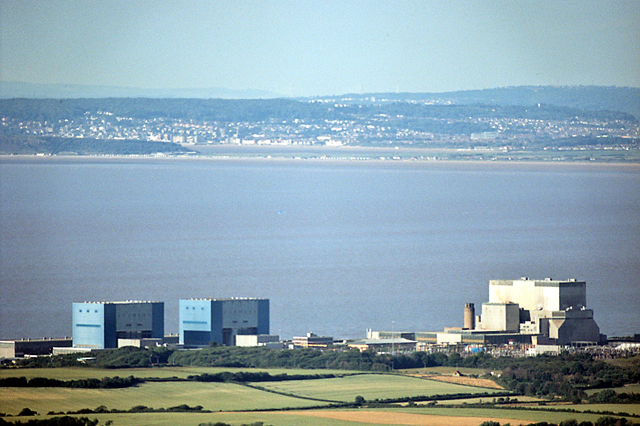 The UK government has finally given the go-ahead to build the new Hinkley C nuclear power station in Somerset. It will consist of two European pressurised reactors, a relatively new technology. No EPR plant has yet been completed, with the one in the most advanced stages of construction at Flamanville in France, having experienced many safety and construction problems. This is currently expected to be more than three times over budget and at least six years behind its original completion date of 2012.
The UK government has finally given the go-ahead to build the new Hinkley C nuclear power station in Somerset. It will consist of two European pressurised reactors, a relatively new technology. No EPR plant has yet been completed, with the one in the most advanced stages of construction at Flamanville in France, having experienced many safety and construction problems. This is currently expected to be more than three times over budget and at least six years behind its original completion date of 2012.
The Hinkley C power station, first proposed in 2007, is currently estimated to cost £18 billion. This cost will be borne entirely by its builder, EDF, the French 85% state-owned company, and its Chinese partner, CGN. When up and running – currently estimated at 2025 – it is expected to produce around 7% of the UK’s electricity output.
On becoming Prime Minister in July 2016, Theresa May announced that the approval for the plant would be put on hold while further investigation of its costs, benefits,  security concerns, technological issues and safeguards was conducted. This has now been completed and approval has been granted subject to new conditions. The main one is that the government “will be able to prevent the sale of EDF’s controlling stake prior to the completion of construction”. This will allow the government to prevent change of ownership during the construction phase. Thus, for example, EDF, would not be allowed to sell its share of Hinkley C to CGN, which currently has a one-third share in the project. EDF and CGN have accepted the new terms.
security concerns, technological issues and safeguards was conducted. This has now been completed and approval has been granted subject to new conditions. The main one is that the government “will be able to prevent the sale of EDF’s controlling stake prior to the completion of construction”. This will allow the government to prevent change of ownership during the construction phase. Thus, for example, EDF, would not be allowed to sell its share of Hinkley C to CGN, which currently has a one-third share in the project. EDF and CGN have accepted the new terms.
After Hinkley the government will have a ‘golden share’ in all future nuclear projects. “This will ensure that significant stakes cannot be sold without the Government’s knowledge or consent.”
In return for their full financing of the project, the government has guaranteed EDF and CGN a price of £92.50 per megawatt hour of electricity (in 2012 prices). This price will be borne by consumers. It will rise with inflation from now and over the first 35 years of the power station’s operation. It is expected that the Hinkley C will have a life of 60 years.
Critics point out that this guaranteed ‘strike price’ is more than double the current wholesale price of electricity and, with the price of renewables falling as technology improves, it will be an expensive way to meet the UK’s electricity needs and cut carbon emissions.
Those in favour argue that it is impossible to predict electricity prices into the distant future and that the certainty this plant will give is worth the high price by current standards.

To assess the desirability of the plant requires an assessment of its costs and benefits. In principle, this is a relatively simple process of identifying and measuring the costs and benefits, including external costs and benefits; discounting future costs and benefits to give them a present value; weighting them by their probability of occurrence; then calculating whether the net present value is positive or negative. A sensitivity analysis could also be conducted to show just how sensitive the net present value would be to changes in the value of specific costs or benefits.
In practice the process is far from simple – largely because of the huge uncertainty over specific costs and benefits. These include future wholesale electricity prices, unforeseen problems in construction and operation, and a range of political issues, such as pressure from various interest groups, and attitudes and actions of EDF and CGN and their respective governments, which will affect not only Hinkley C but other future power stations.
The articles look at the costs and benefits of this, the most expensive construction project ever in the UK, and possibly on Earth..
Articles
Hinkley Point: UK approves nuclear plant deal BBC News (15/9/16)
Hinkley Point: What is it and why is it important? BBC News, John Moylan (15/9/16)
 ‘The case hasn’t changed’ for Hinkley Point C BBC Today Programme, Malcolm Grimston (29/7/16)
‘The case hasn’t changed’ for Hinkley Point C BBC Today Programme, Malcolm Grimston (29/7/16)
U.K. Approves EDF’s £18 Billion Hinkley Point Nuclear Project Bloomberg, Francois De Beaupuy (14/9/16)
Hinkley Point C nuclear power station gets government green light The Guardian, Rowena Mason and Simon Goodley (15/9/16)
Hinkley Point C: now for a deep rethink on the nuclear adventure? The Guardian, Nils Pratley (15/9/16)
Hinkley Point C finally gets green light as Government approves nuclear deal with EDF and China The Telegraph, Emily Gosden (15/9/16)
UK gives go-ahead for ‘revised’ £18bn Hinkley Point plant Financial Times, Andrew Ward, Jim Pickard and Michael Stothard (15/9/16)
Hinkley Point: Is the UK getting a good deal? Financial Times, Andrew Ward (15/9/16)
Hinkley Point is risk for overstretched EDF, warn critics Financial Times, Michael Stothard (15/9/16)
Hinkley C must be the first of many new nuclear plants The Conversation, Simon Hogg (16/9/16)
Report
Nuclear power in the UK National Audit Office, Sir Amyas Morse, Comptroller and Auditor General (12/7/16)
Questions
- Summarise the arguments for going ahead with Hinkley C.
- Summarise the objections to Hinkley C.
- What categories of uncertain costs and uncertain benefits are there for the project?
- Is the project in EDF’s interests?
- How will the government’s golden share system operate?
- How should the discount rate be chosen for discounting future costs and benefits from a project such as Hinkley C?
- What factors will determine the wholesale price of electricity over the coming years? In real terms, do you think it is likely to rise or fall? Explain.
- If nuclear power has high fixed costs and low marginal costs, how does this affect how much nuclear power stations should be used in a situation of daily and seasonal fluctuations in demand?
- How could ‘smart grid’ technology smooth out peaks and troughs in electricity supply and demand? How does this affect the relative arguments about nuclear power versus renewables?
 Australia held a general election on 2 July 2016. The Liberal/National coalition narrowly won in the House of Representatives, gaining a substantially reduced majority of 77 of the 150 seats, to Labor’s 68 and other parties’ 5 seats. One campaign issue for all parties was the destruction of the Great Barrier Reef, which is seen as an environmental disaster. Each party had proposals for tackling the problem and we examine some of them here.
Australia held a general election on 2 July 2016. The Liberal/National coalition narrowly won in the House of Representatives, gaining a substantially reduced majority of 77 of the 150 seats, to Labor’s 68 and other parties’ 5 seats. One campaign issue for all parties was the destruction of the Great Barrier Reef, which is seen as an environmental disaster. Each party had proposals for tackling the problem and we examine some of them here.
The Great Barrier Reef is the largest coral reef in the world. As the BBC’s iWonder guide states:
One of the world’s seven natural wonders, the Great Barrier Reef contains some 900 islands and 3000 smaller reefs. It is larger than the UK, the Netherlands and Switzerland combined, home to around 10% of the world’s marine fish, over 200 bird species and countless other animals, including turtles and dolphins.
But this iconic Reef system is facing unprecedented threats. Together with governments, scientists are playing a key role in the battle to preserve this vulnerable ecosystem before it’s too late.
The Reef is 2300km long. In the northern third, around half of the coral is dead. Few tourists see this, as they tend to dive in the southern third, which, being cooler, is less affected.
The bleaching and destruction of coral reefs has a number of causes. These include: rising water temperatures, generally from global warming and more extreme El Niño events (rising warm waters that periodically spread across the Pacific); pollution, including that from coal mining, industrial effluent and run-off of pesticides, herbicides, fertilisers and sediment from farming, leading to acidification of waters; more frequent and more violent cyclones; rapidly expanding numbers of coral-eating Crown of Thorns starfish; and over fishing of some species of fish, leading to knock-on effects on ecosystems.
 The Barrier Reef and the oceans and atmosphere around it can be regarded as a common resource. The warming of the atmosphere and the oceans, and the destruction of the reef and the wildlife on it, are examples of the ‘tragedy of the commons’. With no-one owning these resources, they are likely to be overused and abused. Put another way, these activities cause negative externalities, which do not appear as costs to the polluters and despoilers, but are still costs to all who treasure the reef. And, from a non-human perspective, it is a cost to the planet and its biodiversity. What is in the private interests of the abusers is not in the social or environmental interest.
The Barrier Reef and the oceans and atmosphere around it can be regarded as a common resource. The warming of the atmosphere and the oceans, and the destruction of the reef and the wildlife on it, are examples of the ‘tragedy of the commons’. With no-one owning these resources, they are likely to be overused and abused. Put another way, these activities cause negative externalities, which do not appear as costs to the polluters and despoilers, but are still costs to all who treasure the reef. And, from a non-human perspective, it is a cost to the planet and its biodiversity. What is in the private interests of the abusers is not in the social or environmental interest.
The Australian government had sought to downplay the extent of the problem, afraid of deterring tourists – a valuable source of revenue – and under pressure from the coal and farming industries. Nevertheless, in the run-up to the election, the destruction of the Reef and what to do about it became a major debating point between the parties.
 The Coalition government has pledged A$1bn for a new Reef fund, which will be dedicated to tackling climate change and water quality.
The Coalition government has pledged A$1bn for a new Reef fund, which will be dedicated to tackling climate change and water quality.
The fund will also help coastal sewage treatment plants to reduce ocean outfalls with efficient pumps, biogas electricity generation and next-generation waste water treatment. Improving water quality will enhance the Reef’s resilience to climate change, coral bleaching and outbreaks of the destructive crown of thorns starfish.
But how much difference the fund can make with the money it will have is not clear.
The Labor Party pledged to follow every recommendation in the Great Barrier Reef Water Science Taskforce’s Final Report, released in May, and to pass laws to prevent farm pollution flowing into the waters around the Reef and to have a more rapid shift towards renewable energy.
The Green Party goes the furthest. In addition to the Labor Party’s proposals, it wants to impose taxes on coal firms equal to the cost of the damage they are causing. The tax revenues would be paid into a multi-billion dollar fund. This would then be spent on measures to rescue the Reef, invest in clean energy projects, stop damaging industrial development, improve farm management and stop polluted run-off into the Reef catchment area by investing in water systems.
Promises at the time of an election are all well and good. Just how much will be done by the re-elected Coalition government remains to be seen.
Interactive Videos and presentations
 David Attenborough’s Great Barrier Reef: an Interactive Journey, Atlantic Productions, David Attenborough (2015)
David Attenborough’s Great Barrier Reef: an Interactive Journey, Atlantic Productions, David Attenborough (2015)
 Global Warming – the greatest market failure Prezi, Yvonne Cheng (5/12/12)
Global Warming – the greatest market failure Prezi, Yvonne Cheng (5/12/12)
Articles
The Great Barrier Reef: a catastrophe laid bare The Guardian, Michael Slezak (7/6/16)
The Guardian view on the Great Barrier Reef: the crisis they prefer to downplay The Guardian (7/6/16)
Fight to save Great Barrier Reef could cost billions, secret government modelling estimates ABC News, Mark Willacy (2/6/16)
Great Barrier Reef: government must choose which parts to save, says expert The Guardian, Joshua Robertson (8/7/16)
This election, what hope is there for the Great Barrier Reef? The Guardian, Michael Slezak (1/7/16)
Coalition will protect Great Barrier Reef with $1bn fund, says PM The Guardian, Gareth Hutchens (12/6/16)
Great Barrier Reef election explainer: how do the parties compare? The Guardian, Michael Slezak (2/6/16)
Five things we can do right now to save the Great Barrier Reef The Guardian, John Pandolfi (13/6/16)
We’ve scored the parties on the Reef My Sunshine Coast, Australian Marine Conservation Society (29/6/16)
Our Most Iconic Places Are Under Dire Threat From Climate Change Huffington Post, Nick Visser (26/5/16)
There are bright spots among the world’s coral reefs – the challenge is to learn from them The Conversation, Australia, Joshua Cinner (21/7/16)
Questions
- Explain what is meant by the Tragedy of the Commons. Is all pollution damage an example of this?
- What can the Australian government do to internalise the external costs to the Great Barrier Reef from (a) farming; (b) mining; (c) global warming?
- Why is it difficult to reach international agreement on tackling climte change? What insights can game theory provide for understanding the difficulties?
- What are the recommendations in the Final Report of the Great Barrier Reef Water Science Taskforce? What mix of tools does it suggest?
- What are the relative advantages and disadvantages of taxation, laws and regulations, public investment, education and international negotiation as policy instruments to protect the Reef?
 In the following article, Joseph Stiglitz argues that power rather than competition is a better starting point for analysing the working of capitalism. People’s rewards depend less on their marginal product than on their power over labour or capital (or lack of it).
In the following article, Joseph Stiglitz argues that power rather than competition is a better starting point for analysing the working of capitalism. People’s rewards depend less on their marginal product than on their power over labour or capital (or lack of it).
As inequality has widened and concerns about it have grown, the competitive school, viewing individual returns in terms of marginal product, has become increasingly unable to explain how the economy works.
Thus the huge bonuses, often of millions of pounds per year, paid to many CEOs and other senior executives, are more a reflection of their power to set their bonuses, rather than of their contribution to their firms’ profitability. And these excessive rewards are not competed away.
Stiglitz examines how changes in technology and economic structure have led to the increase in power. Firms are more able to erect barriers to entry; network economies give advantages to incumbents; many firms, such as banks, are able to lobby governments to protect their market position; and many governments allow powerful vested interests to remain unchecked in the mistaken belief that market forces will provide the brakes on the accumulation and abuse of power. Monopoly profits persist and there is too little competition to erode them. Inequality deepens.
According to Stiglitz, the rationale for laissez-faire disappears if markets are based on entrenched power and exploitation.
Article
Monopoly’s New Era Chazen Global Insights, Columbia Business School, Joseph Stiglitz (13/5/16)
Questions
- What are the barriers to entry that allow rewards for senior executives to grow more rapidly than median wages?
- What part have changes in technology played in the increase in inequality?
- How are the rewards to senior executives determined?
- Provide a critique of Stiglitz’ analysis from the perspective of a proponent of laissez-faire.
- If Stiglitz analysis is correct, what policy implications follow from it?
- How might markets which are currently dominated by big business be made more competitive?
- T0 what extent have the developments outlined by Stiglitz been helped or hindered by globalisation?
 With first Houston, then several Caribbean islands and Florida suffering dreadful flooding and destruction from Hurricanes Harvey and Irma, many are questioning whether more should be spent on flood prevention and reducing greenhouse gas emissions. Economists would normally argue that such questions are answered by conducting a cost–benefit analysis.
With first Houston, then several Caribbean islands and Florida suffering dreadful flooding and destruction from Hurricanes Harvey and Irma, many are questioning whether more should be spent on flood prevention and reducing greenhouse gas emissions. Economists would normally argue that such questions are answered by conducting a cost–benefit analysis. But if you asked people, say, 15 years ago whether such expenditure should be undertaken, many would have said no, given that the protection would be provided quite a long time in the future. Also many people back then would doubt that the defences would be necessary and many would not be planning to live there indefinitely.
But if you asked people, say, 15 years ago whether such expenditure should be undertaken, many would have said no, given that the protection would be provided quite a long time in the future. Also many people back then would doubt that the defences would be necessary and many would not be planning to live there indefinitely. However, it is also likely, if the trend of recent decades is to continue, that economic growth will be largely confined to the rich and that the poor will be little better off, if at all. And it is the poor who often suffer the most from natural disasters. Just look, for example, at the much higher personal devastation suffered from hurricane Irma by the poor on many Caribbean islands compared with those in comparatively wealthy Florida.
However, it is also likely, if the trend of recent decades is to continue, that economic growth will be largely confined to the rich and that the poor will be little better off, if at all. And it is the poor who often suffer the most from natural disasters. Just look, for example, at the much higher personal devastation suffered from hurricane Irma by the poor on many Caribbean islands compared with those in comparatively wealthy Florida.








